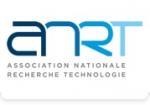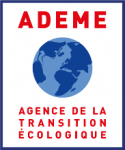Design of Fault Injection Models Within Pre-silicon Security Methodologies
| ABG-133970 | Master internship | 6 months | 1400 euros |
| 2025-10-22 |
- Computer science
Employer organisation
Website :
CEA Tech is the world leader in technological research. Teams of research engineers are mobilized to build and transfer to industrial partners technology portfolios that meet the needs of technology sectors in the fields of information, communication, energy and healthcare.The List, one of CEA Tech's institutes, focuses its research on intelligent digital systems. With major economic and social implications, its R&D programs focus on advanced manufacturing, embedded systems, ambient intelligence and the control of ionizing radiation for health.
Within the DSCIN department of CEA List, the LECA and LFIM laboratories invest R&D efforts in the analysis of the robustness of embedded systems against fault-injection attacks.
This is a joint internship with MSE.
Description
Subject
Fault-injection attacks exploit hardware perturbations to drive a processor into unexpected states or execution paths, which can leak secrets or enable privilege escalation. Fault-injection attacks are taken into account in the design of high-security products (e.g. debit / credit cards, recent smartphones, etc.). The open-source community is now developing new tools and attack approaches, thus widening the importance of is threat in the cybersecurity community. Recent work has emphasized the importance of accounting for the microarchitectural consequences of such injections. In this context, CEA List have developed pre-silicon tools [1] that have proven effective at discovering microarchitectural vulnerabilities or, for a given fault injection model, formally proving the robustness of several RISC-V processors.
µArchiFI [2,3] is one of these pre-silicon tools, it constructs a formal transition system from a Verilog processor description, a binary program, and an attacker model that encodes the fault model. However, the fault models used by µArchiFI do not incorporate layout information. Analyses are performed at the Register Transfer Level (RTL) and can evaluate a wide range of fault models (bit/word set, reset, flip, and symbolic behaviors) on signals selected individually. In a real fault attack scenario, for instance, using a laser source as the fault injection tool, it may hit different bits of the same signal or of different signals.
The internship objective is to enhance µArchiFI with new fault models so that signals that are affected by the laser beam are selected according to laser-spot location regarding the circuit layout. This requires: 1) integrating layout information and location constraints into the fault models, 2) modelling the laser beam’s Gaussian profile to select signals that fall within the beam surface as studied in [4] and illustrated in the Figures at the end of the document. These enhanced fault models will be used to rerun security verifications over processor designs already analyzed by µArchiFI. The obtained results will be compared with state-of-the-art experimental characterizations and against previous results produced by µArchiFI, in particular to benchmark the time it take to perform verification. Additional fault models exploring whether other types of information, such as circuit timing, can be leveraged to capture specific injection means such as clock glitching.
References
[1] CEA List, Pre-silicon tools for security assessment against fault-injection attacks. https://list.cea.fr/fr/prendre-en-compte-les-vulnerabilites-micro-architecturales-dans-lanalyse-de-robustesse-des-systemes-securises-contre-linjection-de-fautes/
[2] µArchiFI: a pre-silicon tool to assess the robustness of HW/SW systems against fault-injection attacks. Available: https://github.com/CEA-LIST/uArchiFI
[3] Simon Tollec et al. : μArchiFI: Formal Modeling and Verification Strategies for Microarchitectural Fault Injections. FMCAD 2023.
[4] Standard CAD Tool-Based Method for Simulation of Laser-Induced Faults in Large-Scale Circuits. PhD Raphael Viera, 2018. https://theses.fr/2018MONTS072
Opportunities
-
Practical application: work on state-of-the-art pre-silicon tools to assess the security of secure processors against fault-injection attacks and enhance such tools.
-
Technical skills: develop expertise in formal analysis, security verification, and hardware synthesis flows, design of secured processor micro-architectures.
-
Publication: potential to publish results in workshop/conferences on hardware security;
-
Collaboration: work alongside experienced researchers and engineers from CEA and MSE
-
Resources: access to state-of-the-art facilities and infrastructure.
Profile
This position is aimed at students seeking an ambitious technical internship, eager to gain significant experience in industry-related technological research. It is particularly well-suited to students considering a doctorate, with new funded positions offered each year within the department. The internship is aimed at students in their final year of engineering school (or Master 2) in computer science or microelectronics, or equivalent levels, preferably with a specialization in processor systems/architecture or formal methods.
- Knowledge of micro-architecture or cybersecurity is an asset, but not a prerequisite.
- A strong capacity for personal work, ability to work in a team and motivation to take on technical challenges are essential.
- Programming capabilities, in particular in C++ and Object-Oriented Programming (OPP)
Starting date
Vous avez déjà un compte ?
Nouvel utilisateur ?
Get ABG’s monthly newsletters including news, job offers, grants & fellowships and a selection of relevant events…
Discover our members
 CESI
CESI  Tecknowmetrix
Tecknowmetrix  PhDOOC
PhDOOC  Institut Sup'biotech de Paris
Institut Sup'biotech de Paris  Aérocentre, Pôle d'excellence régional
Aérocentre, Pôle d'excellence régional  MabDesign
MabDesign  ASNR - Autorité de sûreté nucléaire et de radioprotection - Siège
ASNR - Autorité de sûreté nucléaire et de radioprotection - Siège  Laboratoire National de Métrologie et d'Essais - LNE
Laboratoire National de Métrologie et d'Essais - LNE  Groupe AFNOR - Association française de normalisation
Groupe AFNOR - Association française de normalisation  Généthon
Généthon  ANRT
ANRT  ONERA - The French Aerospace Lab
ONERA - The French Aerospace Lab  ADEME
ADEME  SUEZ
SUEZ  TotalEnergies
TotalEnergies  MabDesign
MabDesign  Nokia Bell Labs France
Nokia Bell Labs France  CASDEN
CASDEN  Ifremer
Ifremer



